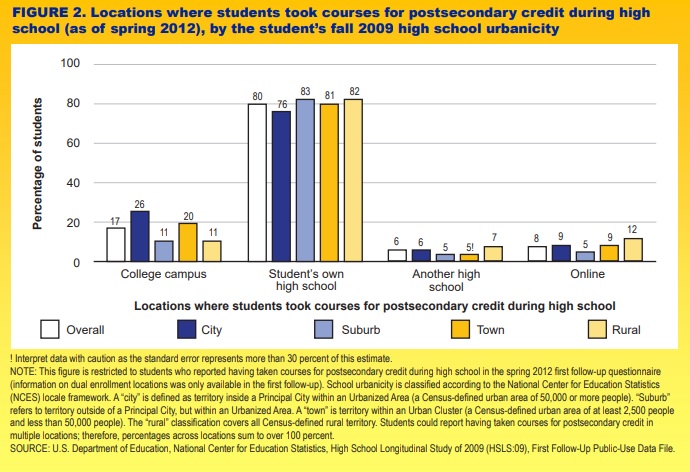You have /5 articles left.
Sign up for a free account or log in.
About a third of high school students took courses for college credit, according to a nationally representative study from the U.S. Department of Education. The new dual-enrollment data are based on a 2009 study of more than 23,000 ninth graders, whom the department surveyed again in following years.
The study found that students whose parents had higher levels of education were more likely to take courses for college credit while they were in high school. For example, 42 percent of high school students whose parents held at least a bachelor's degree took college courses, compared to 26 percent whose parents did not hold a high school credential. In addition, the study found that a lower percentage of Latino high school students (30 percent) and black students (27 percent) took dual-enrollment courses than did white or Asian American students (both 38 percent).
The study also looked at the location or delivery method for dual-enrollment courses (see below).




